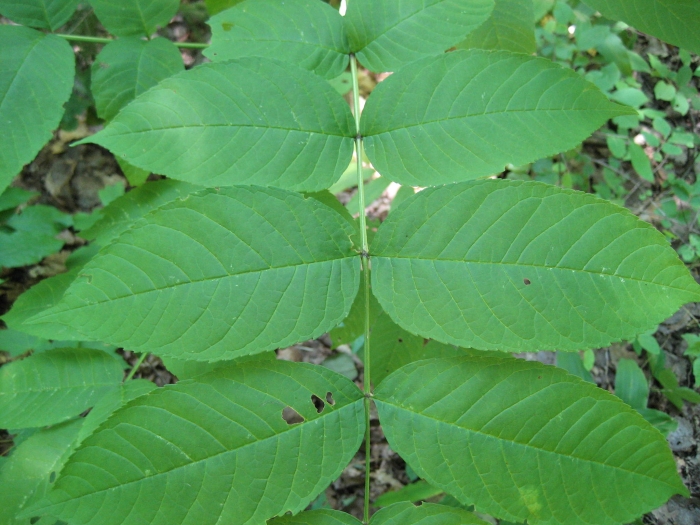Black Ash
(Fraxinus nigra)
Black Ash (Fraxinus nigra)
/
/

rboles
CC BY 4.0
Image By:
rboles
Recorded By:
Copyright:
CC BY 4.0
Copyright Notice:
Photo by: rboles | License Type: CC BY 4.0 | License URL: http://creativecommons.org/licenses/by/4.0/ | Rights Holder: rboles | Publisher: iNaturalist | Date Created: 2021-08-06T13:36:52-07:00 |





















































Estimated Native Range
Summary
Fraxinus nigra, commonly known as Black Ash, is a medium-sized deciduous tree native to wetland areas of forests, often found in swamps and peat bogs, as well as along streams and rivers in eastern Canada and the northeastern United States, extending from western Newfoundland to southeastern Manitoba, and south to Illinois and northern Virginia. It typically reaches 15–20 meters in height with a trunk up to 60 cm in diameter. The bark is gray and uniquely corky, even on young trees, becoming scaly and fissured with age. The winter buds are dark brown to blackish with a velvety texture. Black Ash flowers in spring with inconspicuous, wind-pollinated panicles, followed by samaras measuring 2.5–4.5 cm long. The tree is one of the first to lose its leaves in the fall.
Black Ash is valued for its ability to thrive in wet conditions and is used for reforestation in suitable wetland habitats. It is also appreciated for its traditional use in basket weaving by Indigenous peoples. In cultivation, it requires full sun, high amounts of water, and prefers soils with slow to medium drainage. However, the species is under severe threat from the emerald ash borer, which has caused widespread mortality. Gardeners should be aware of this pest and consider resistant alternatives or be prepared to implement control measures.CC BY-SA 4.0
Black Ash is valued for its ability to thrive in wet conditions and is used for reforestation in suitable wetland habitats. It is also appreciated for its traditional use in basket weaving by Indigenous peoples. In cultivation, it requires full sun, high amounts of water, and prefers soils with slow to medium drainage. However, the species is under severe threat from the emerald ash borer, which has caused widespread mortality. Gardeners should be aware of this pest and consider resistant alternatives or be prepared to implement control measures.CC BY-SA 4.0
Plant Description
- Plant Type: Tree
- Height: 30-60 feet
- Width: 15-30 feet
- Growth Rate: Slow
- Flower Color: N/A
- Flowering Season: Spring
- Leaf Retention: Deciduous
Growth Requirements
- Sun: Full Sun, Part Shade
- Water: High
- Drainage: Slow, Medium
Common Uses
Bee Garden, Bird Garden, Butterfly Garden, Water Garden
Natural Habitat
Wetland areas of forests, swamps, peat bogs, and along streams and rivers
Other Names
Common Names: Brown Ash, Hoop Ash, Swamp Ash, Water Ash, Schwarz-Esche, Frêne De Grève, Frêne Gras, Frêne Noir, Svartask
Scientific Names: , Fraxinus nigra, Fraxinus sambucifolia, Calycomelia nigra, Fraxinoides nigra, Fraxinus americana var. nigra, Fraxinus americana var. sambucifolia, Fraxinus nigra f. cucullata, Fraxinus nigra var. cucullata, Fraxinus nigra var. sambucifolia
GBIF Accepted Name: Fraxinus nigra Marshall